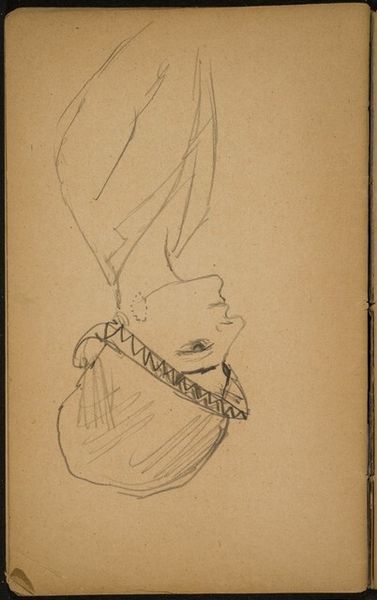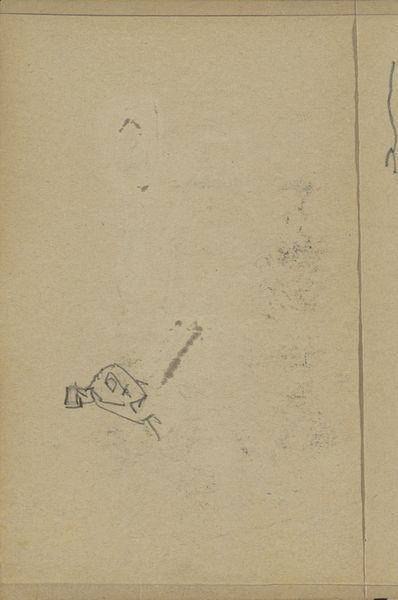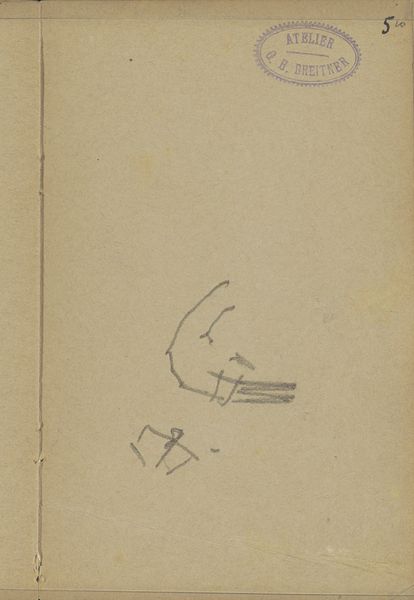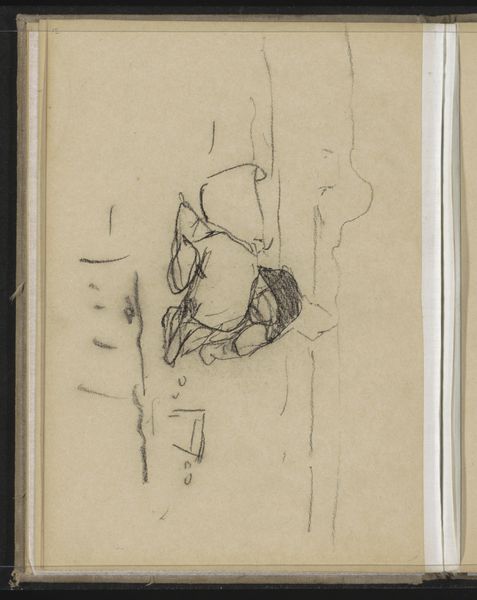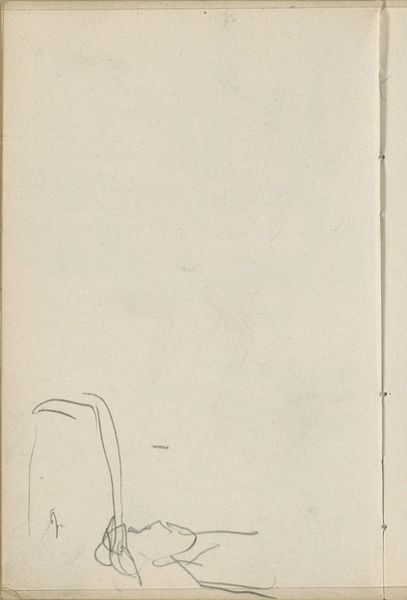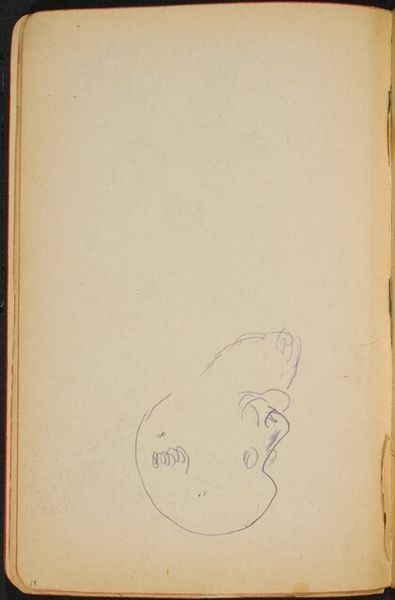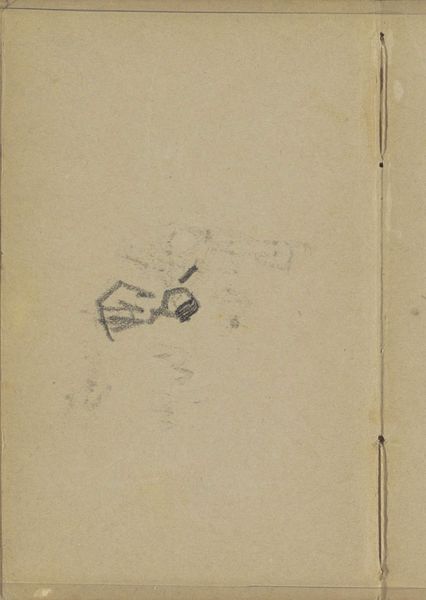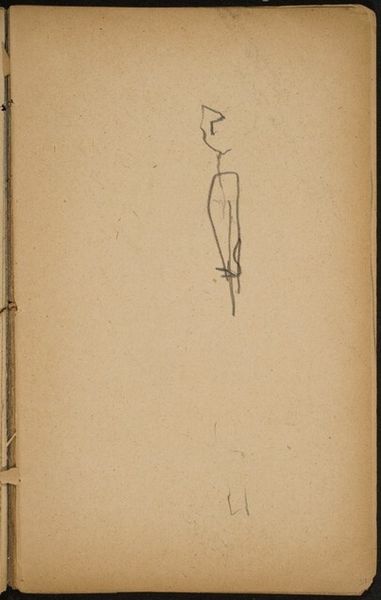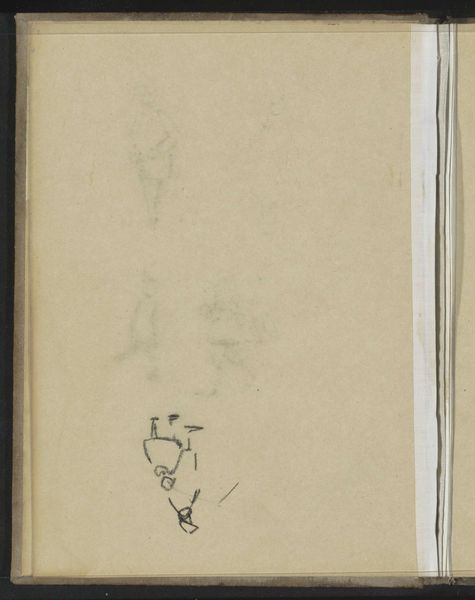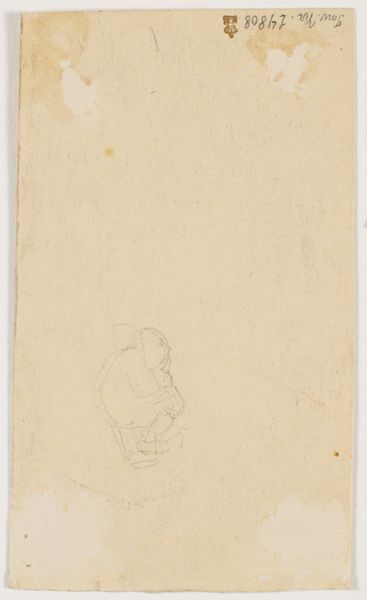![Frauenkopf mit Hut (Woman's Head with a Hat) [p. 82] by Max Beckmann](/_next/image?url=https%3A%2F%2Fd2w8kbdekdi1gv.cloudfront.net%2FeyJidWNrZXQiOiAiYXJ0ZXJhLWltYWdlcy1idWNrZXQiLCAia2V5IjogImFydHdvcmtzLzBkMjVhNWE5LTdjMWEtNDYyOS04NGFlLWU4NzRhNzNkODM5MS8wZDI1YTVhOS03YzFhLTQ2MjktODRhZS1lODc0YTczZDgzOTFfZnVsbC5qcGciLCAiZWRpdHMiOiB7InJlc2l6ZSI6IHsid2lkdGgiOiAxOTIwLCAiaGVpZ2h0IjogMTkyMCwgImZpdCI6ICJpbnNpZGUifX19&w=828&q=75)
drawing, pencil
#
portrait
#
drawing
#
pencil
#
expressionism
Dimensions: page size: 16.3 x 10 cm (6 7/16 x 3 15/16 in.)
Copyright: National Gallery of Art: CC0 1.0
Curator: Max Beckmann's "Frauenkopf mit Hut," or "Woman's Head with a Hat," a pencil drawing on paper, captures our attention today. It seems to be a sketch, a quick study rather than a finished piece. Editor: Immediately, I'm struck by the tilted gaze. There’s a kind of defiance, or perhaps weariness, in how she’s angled her head. The hat itself, simple as it is, frames a complex emotional landscape. Curator: As a pencil drawing, it emphasizes the direct relationship between the artist's hand and the page. Notice how the quick strokes define the form, almost carelessly but intentionally revealing Beckmann’s thought process in that moment. It brings the physical act of creation to the forefront. The choice of a simple graphite pencil emphasizes accessibility; the artist, rather than high art craft. Editor: The zigzag pattern on the hat is quite striking against the otherwise muted tones. That repetitive motif feels significant. Maybe it's meant to evoke a sense of instability, or maybe it’s representative of social stratification and her relationship within those constructs. Curator: It is intriguing to ponder the function of that zizag motif. For instance, was it to provide textural interest? The social and economic dimensions can never be discounted given Beckmann's experience in post-war Germany. Could that texture reflect the social and economic turbulence he witnessed, with its disruptions of traditional craft practices? Editor: Definitely. Also, consider the period's obsession with masks, facades—the literal face she presents to the world is carefully constructed. What does the hat conceal, or perhaps announce about her identity? Curator: Exactly. Considering how prevalent the use of paper became with industrial production, what stories does this particular page tell us? What paper mill did it come from, how many hands did it pass through before it became a ground for artistic production? It prompts considerations about the conditions of art creation, even if those are outside of the final artwork’s immediate content. Editor: And now I’m contemplating how Beckmann perhaps perceived the hat and other adornments: as emblems within his artistic language. Ultimately, it's these potent, enduring images that spark interpretations. Curator: So, while I was focusing on how the conditions of artwork are essential to consider, you’re drawing attention to how that impacts cultural meanings. Editor: Indeed. These contrasting perspectives add layers to appreciating Beckmann's concise study.
Comments
No comments
Be the first to comment and join the conversation on the ultimate creative platform.

